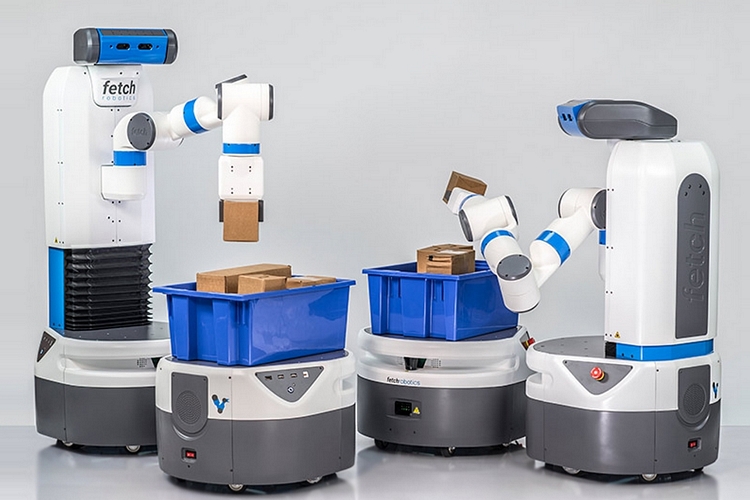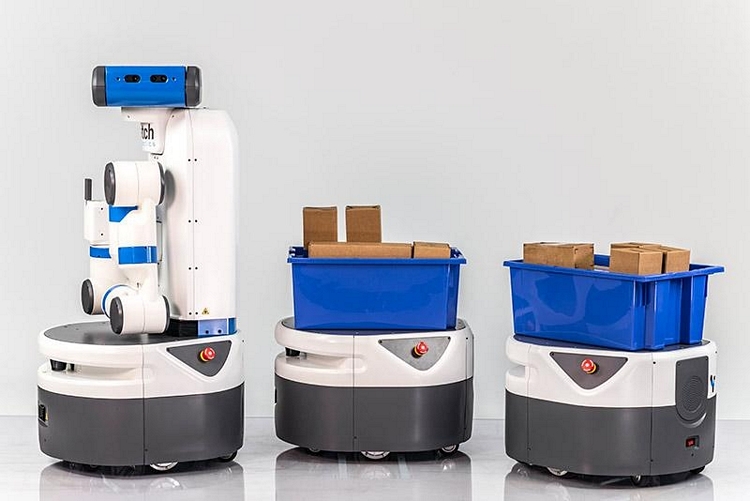I’ve never worked in a warehouse before, but I imagine it must be a physically exhausting task. Running from shelf to shelf to retrieve items, transporting those items to packing, then doing the whole thing over and over can be seriously taxing, making it a job that’s simply ripe for a robot takeover. Fetch and Freight is a two-robot system that wants to lead that charge.
While it’s not the first robot system to handle order processing at the warehouse level (Amazon, for instance, relies partly on robots from Kiva Systems), it may very well prove to be one of the more efficient. It’s fast, it’s fully automated (no humans needed), it can work without special infrastructure (it uses a PrimeSense 3D sensor in its head to “see” things and a 25-meter range laser for navigation), and it can keep up a non-stop pace the way only robots could, making it ideal for large warehouses with massive volumes of transactions.
Fetch and Freight consists of two robots: one that fetches the items from the shelves and another that transports the same item to the next step in the line. Fetch, which is classified as a mobile manipulator, uses a back-drivable 7 DOF arm that can reach into shelves up to 2 meters high and carry loads of up to 6 kilograms using its gripper hand. Freight, on the other hand, uses the same base component as Fetch, but replaces everything from the spine upwards with a basket that can ferry loads up to 70 kilograms. Both can travel at up to 2 meters per second (modifiable to reach 3 meters per second, if necessary).
The robots are designed to autonomously recharge themselves in 20 minute bursts, with a full charge requiring a three hour stay at the designated hubs. When put to work 16 hours a day, 365 days a year, Fetch is expected to run four years without any incidence (after that, the arm may start showing wear). Freight is expected to run without need for repairs much longer. And, yes, the robots are designed to communicate with an accompanying software system that gives floor managers real-time access to all of the robots’ readings and metrics.
You can learn more about Fetch and Freight directly from Fetch Robotics.


